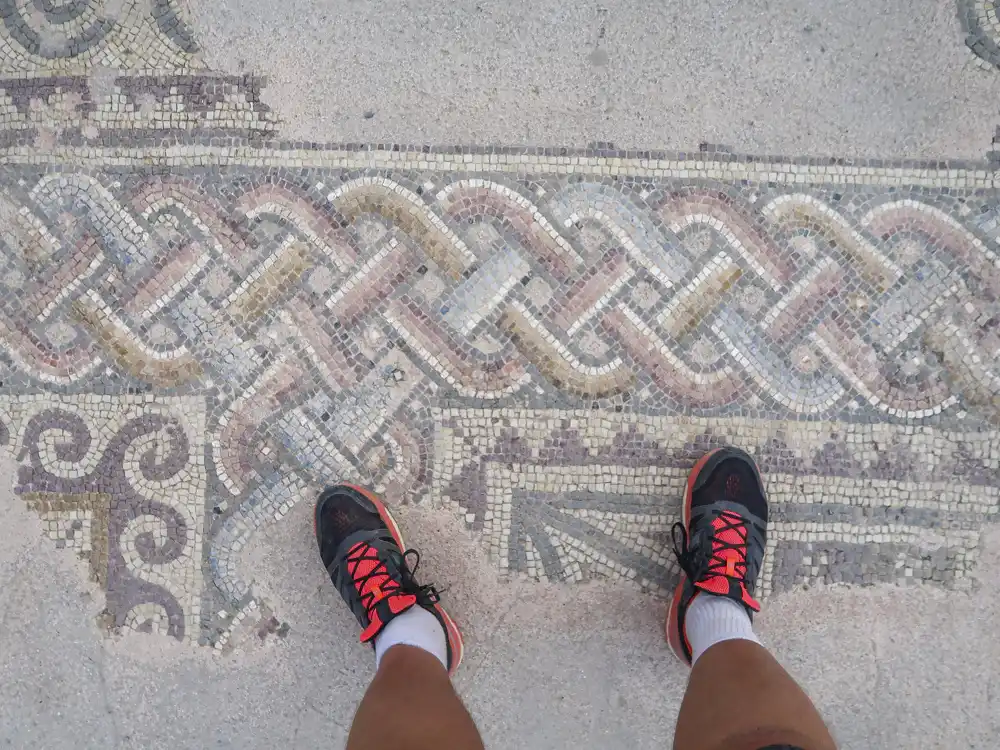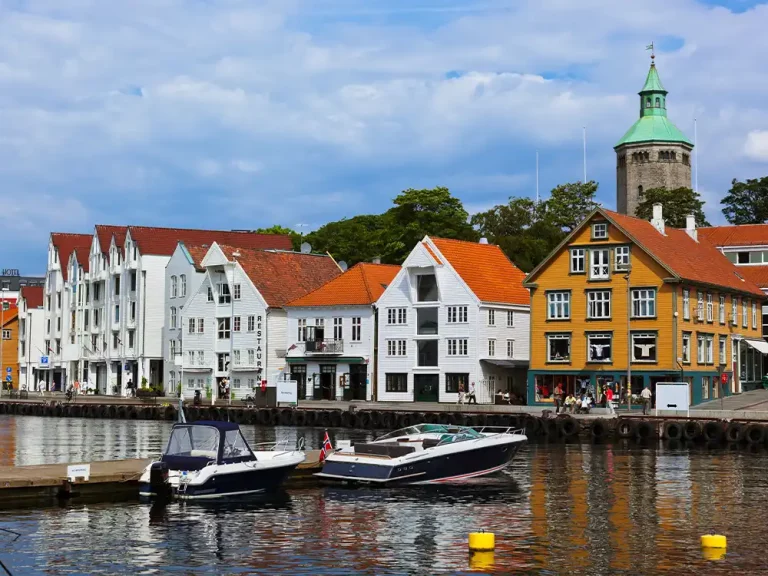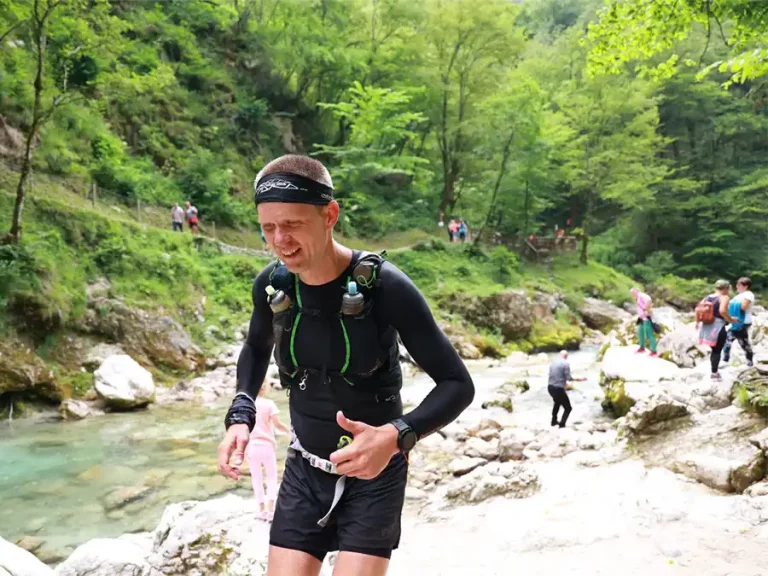How to have fun in the city? The plan was to run 15 km a day. But how to combine that with exploring the historic Paphos?
Sea Caves
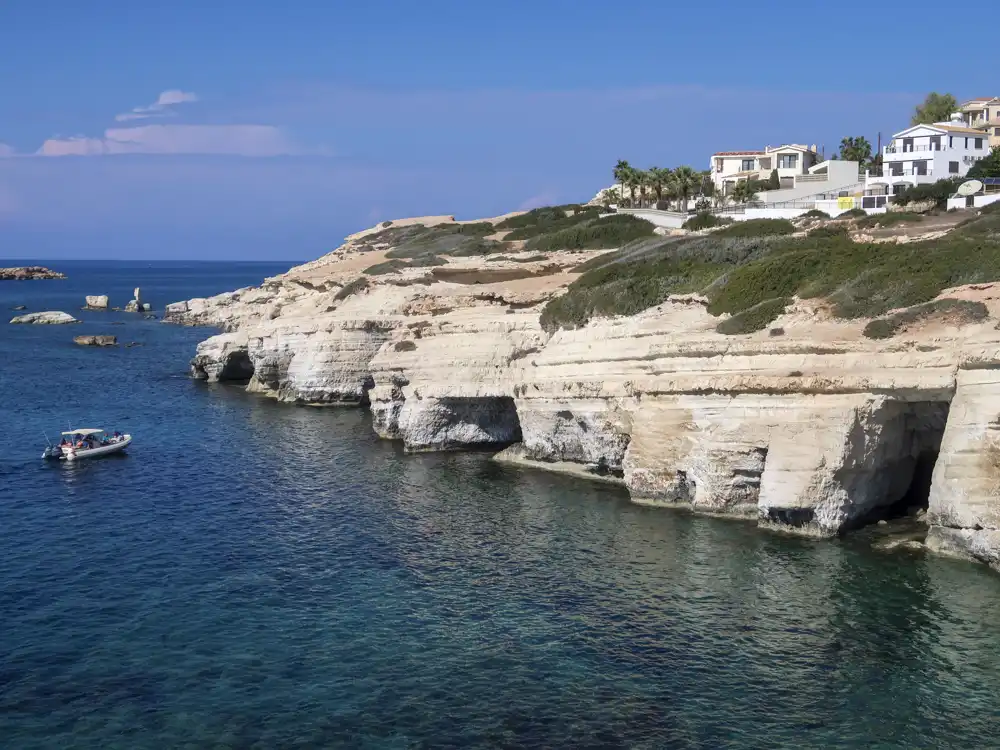
A great starting point is the Sea Caves, located at the edge of the town in the village of Peyia. The sea has been shaping them for thousands of years. Seals used to live in them until construction drove them away. A rugged trail runs along the coast from the caves to the city. However, you can’t reach the caves themselves on foot—only by boat. But if you’re looking for an endurance challenge, the city center will do just fine.
Moutallos Cliffs
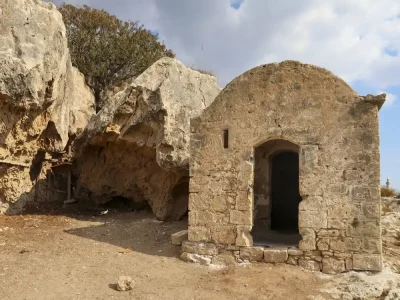
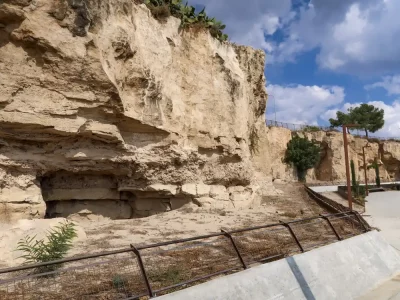
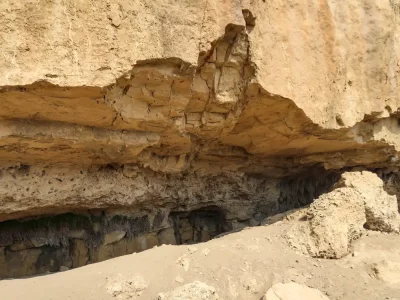
First, I headed to the cave temples of Moutallos Cliffs. Moutallos marks the boundary between the old and new town, sitting on the edge of a cliff. At its base are natural caves of immense historical significance. Today, Moutallos is almost abandoned, as it was previously home to Turkish Cypriots who were forced to relocate to the north after the 1974 Turkish invasion of Cyprus. Greek Cypriot refugees moved in afterward. The goal was to create an underground memorial space telling the history of both communities—Turkish and Greek Cypriots.
But I was disappointed—everything was closed. After a quick look around, I ran down to the sea. Paphos has an excellent coastal cycling route, naturally used for all kinds of sports. By the time I reached the Tombs of the Kings, I had already run 8 km.
Tombs of the Kings
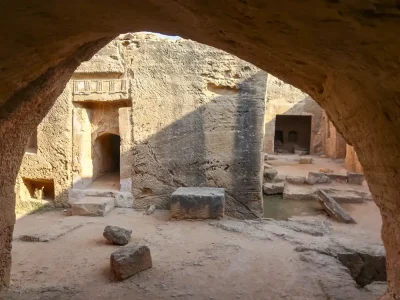
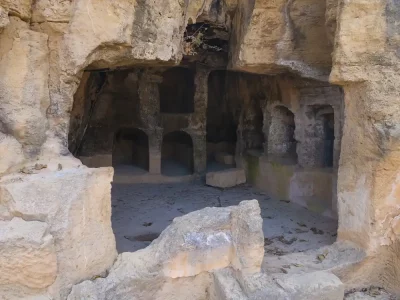
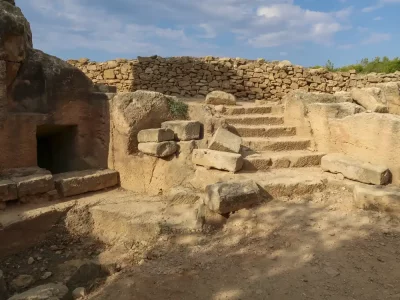
The first stop I recommend is the vast UNESCO-listed necropolis—the Tombs of the Kings. These monumental underground tombs, carved from solid rock, date back to the Hellenistic and Roman periods. Despite the name, no kings were actually buried here—only high-ranking nobles and elite officials.
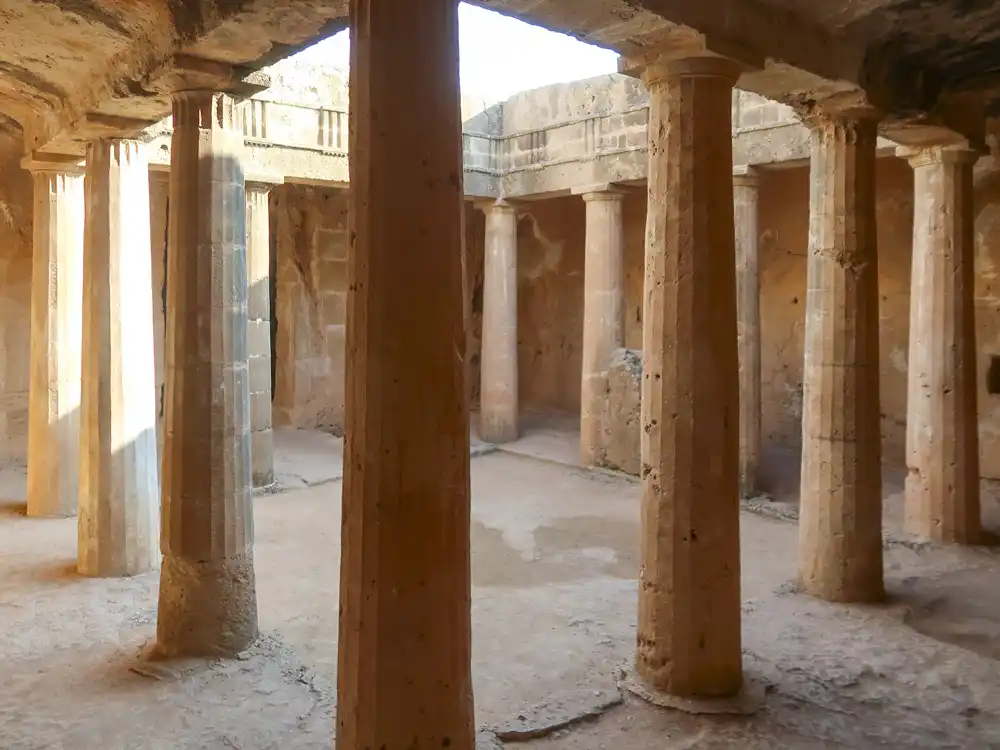
Some tombs feature intricately decorated Doric columns. The site is enormous, and if you want to soak in the historical atmosphere, allow at least an hour. Running with short stops took me precisely that long.
Toumpallos
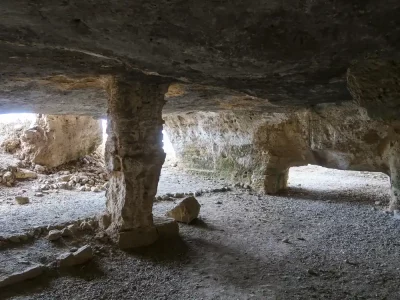
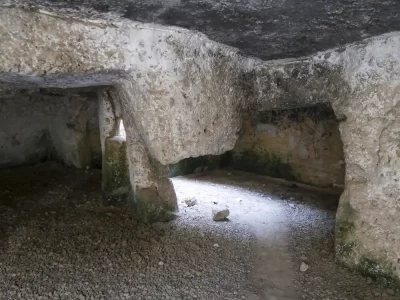
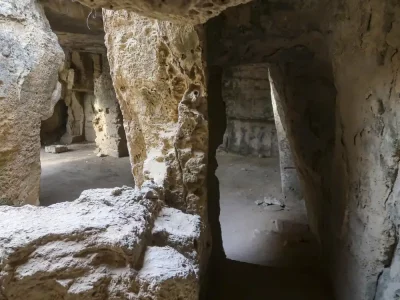
The Sanctuary of Apollo. This underground cave complex was breathtaking in its size. Carved into natural rock, it consists of halls and interconnected passages. Initially identified as a Ptolemaic military camp, recent research suggests it functioned as a temple dedicated to Apollo. You can’t skip this one—go inside. It’s free and possibly the most remarkable thing you’ll see in Paphos.
Kato Archaeological Park
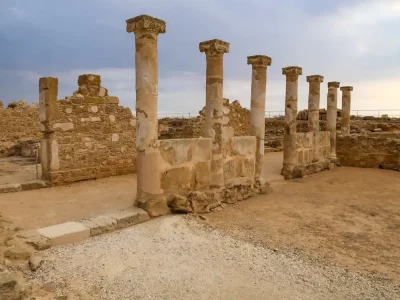
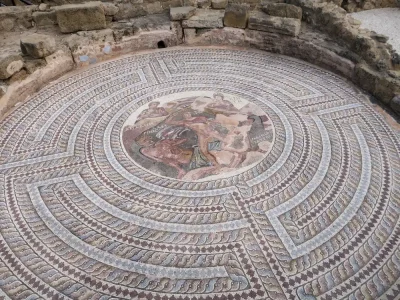
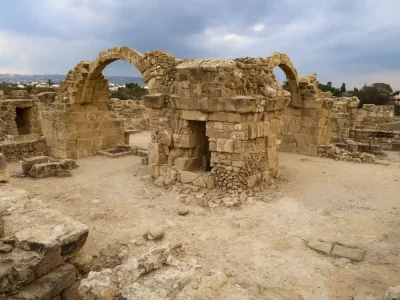
The House of Dionysus, Orpheus, and Theseus—no need to go on. The archaeological park is a paradise for history lovers. Kato Paphos Archaeological Park is one of the most significant archaeological sites in Cyprus and has been a UNESCO World Heritage Site since 1980. The park mainly features Roman ruins from the 4th century BC to the Middle Ages. The intricate mosaic floors of four Roman villas depict unique scenes from Greek mythology and are true artistic treasures.
End of the Day
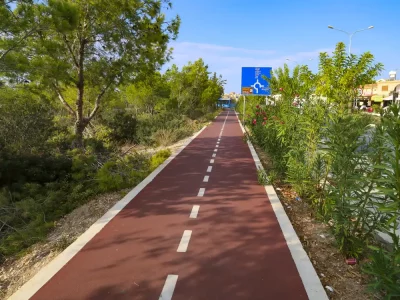
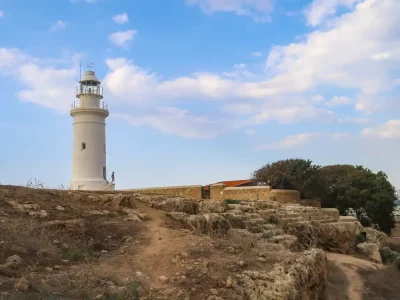
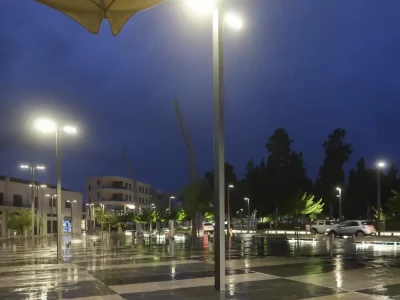
It’s late at night. I’m exhausted. Today’s stats: One day in Paphos, 28 km on foot, too tired to even finish my beer.
Yes, you can trail-run in Paphos itself. Sea Caves, Moutallos Cliffs, the Tombs of the Kings, Toumpallos, and Kato Archaeological Park—if you follow this sequence, one site leads to the next, ending at the historic harbor.
After an entire day and 28 km on my feet, I wisely called a taxi from there. 🙂

